Contents
- Early History
- Colonial Era
- Early Institutions
- Local Figures & Organizations
- Baburaoji Kale
- Post-Independence Era and Contemporary Educational Infrastructure
- Primary & Secondary Education
- Institutions of Higher Learning
- Milind College
- Government College of Education
- Dr. Babasaheb Ambedkar Marathwada University
- Graphs
- Enrollment and Dropout Rate
- A. Student Enrollment Numbers
- B. Student Enrollment (Class-Wise)
- C. Student Enrollment (Gender-Wise)
- D. Student Enrollment (By School Management Type)
- E. Drop Out Rate (By Schooling Level)
- F. Drop Out Rate (By Gender)
- Schools
- A. No. of Schools
- B. No. of Schools (Filtered by Gender Mix)
- C. No. of Schools (By School Management Type)
- Teachers
- A. No. of Teachers
- B. No. of Teachers (By School Management Type)
- C. No. of Teachers (Male vs Female)
- D. Education Level of Teachers
- Sources
CHH. SAMBHAJI NAGAR
Education
Last updated on 28 July 2025. Help us improve the information on this page by clicking on suggest edits or writing to us.
The educational framework of Chhatrapati Sambhaji Nagar aligns with the broader structure of the Indian education system, encompassing pre-primary, primary, secondary, and higher education. However, its history extends well beyond this contemporary structure. Interestingly, several centers of learning tied to Buddhist and Jain systems of education are believed to have existed in the district.
The 19th century brought many changes in the district’s educational system as Western frameworks were introduced. British administrators and missionaries became actively involved in shaping education in the region. Additionally, as part of the Hyderabad State during this period, the district’s educational development was also influenced by the Nizam Shahis. Later, the early 20th century saw a wave of local initiatives; its existence indicated an increasing public awareness regarding the importance of education. Local communities took charge of education, a movement that carried into the post-independence era, shaping the district’s educational landscape in lasting ways. Today, Sambhaji Nagar is emerging as a notable educational hub, attracting students not only from across Maharashtra but also from other parts of India and abroad, including countries such as Bhutan, Nepal, and several nations in Africa and the Middle East.
Early History
In ancient India, religion profoundly influenced daily life, and education was deeply intertwined with spiritual practices. As Sugunam Das (1962) notes, an academician, early educational systems, though unconventional by today’s standards, effectively met the intellectual and spiritual needs of the community. This era was characterized by a harmonious blend of metaphysical inquiry and self-realization, largely driven by religious teachings. Revered figures such as rishis, acharyas, and monks established learning centers in serene forest retreats, dedicating themselves to meditation and the pursuit of truth, with Vedic, Jain, and Buddhist philosophies at the forefront.
Buddhism introduced a distinctive educational framework centered around Viharas, creating an extensive network of learning. Monks managed these institutions, offering both spiritual and secular education with a strong emphasis on moral conduct. While these centers may not have been formal schools, their artistic and architectural legacies significantly captured Buddhist philosophies and teachings.
The Ajanta and Ellora Caves, located in Sambhaji Nagar, are primarily recognized as religious sites but also played crucial roles in ancient education. The Ajanta Caves functioned as viharas and worship halls, providing monks with a retreat for study and religious practice, especially during the monsoon season. Their walls, adorned with intricate paintings and sculptures, vividly illustrated the teachings of Buddha, facilitating meditation and learning.
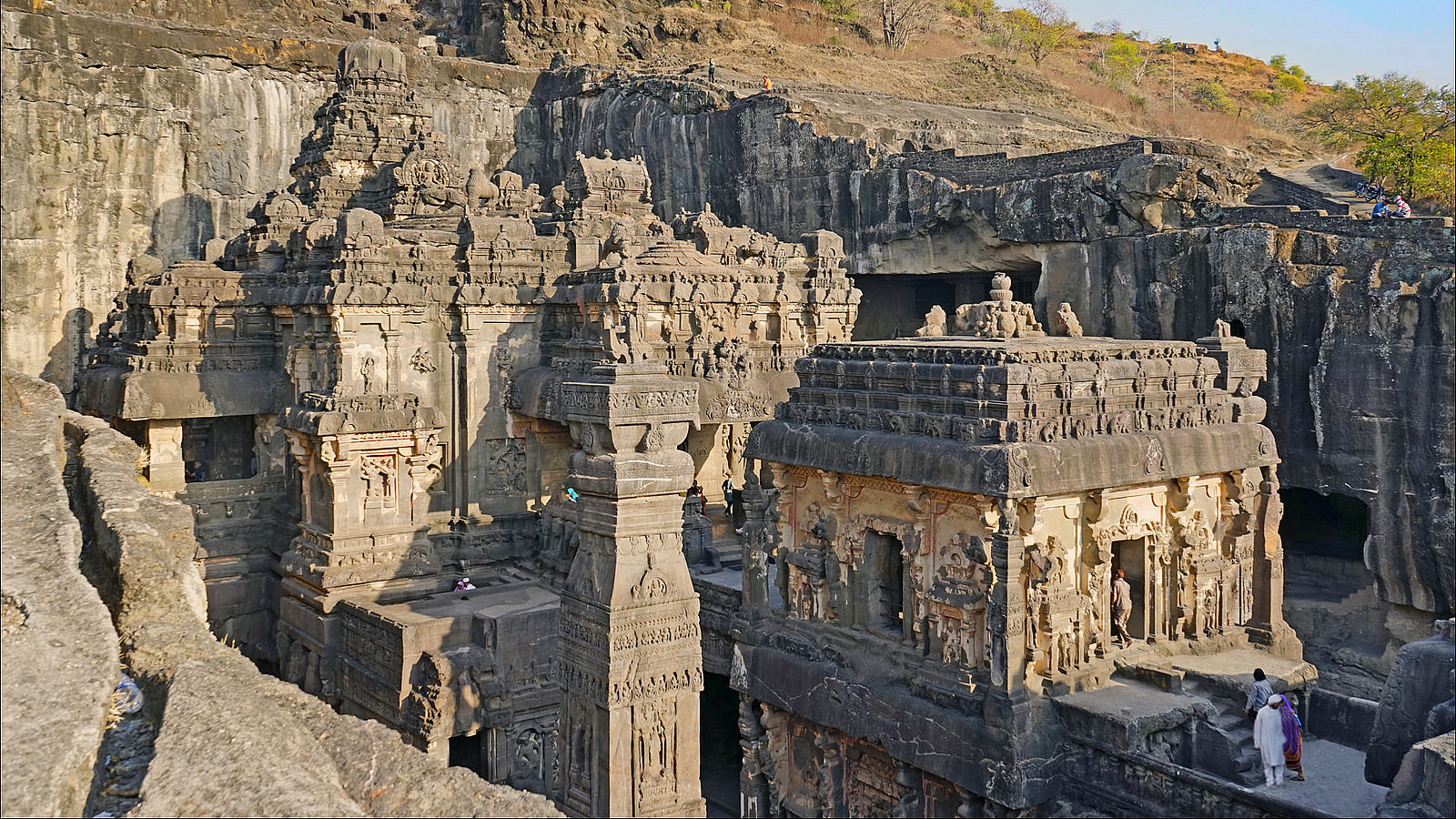
Ellora also boasts significant historical importance. The Mahanubhava Sant Chakradhar Swami is known to have resided there, underscoring the site's enduring relevance even into the late medieval period. Scholars note that the architectural design of Caves 5, 11, and 12 strongly suggests their function as educational centers, indicating that Ellora was likely a vital hub for Buddhist education during the 6th and 7th centuries CE.
The district also shares many connections to Jain systems of education. Viraj Shah (2014), in “Power of Nemgiri,” notes that in the pre-14th century, several significant Jain centers dotted locations like Aurangabad (present-day Sambhaji Nagar), Daulatabad (Sambhaji Nagar district), Ter (Dharashiv district), Kachner (Sambhaji Nagar district), and Kandhar (Nanded district). Aurangabad and Daulatabad, particularly, are believed to have evolved into distinct pithas, or seats of Bhattarakas (head of Digambara Jain institutions), drawing scholars and devotees from far and wide.
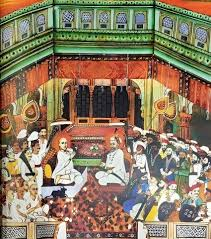
Other than this, in Daulatabad, notably, Acharya Hiravijaya, renowned for his influence on Emperor Akbar, is believed to have studied during his youth.
Colonial Era
By the 19th century, the introduction of the Western education framework brought significant changes to the district, as British administrators and missionaries became actively involved in shaping its educational landscape.
Until 1948, the region was part of Hyderabad State, governed by the Nizams. The city of Aurangabad (present-day Sambhaji Nagar) saw various educational development initiatives, as noted in historical gazetteers. In the 1870s, efforts to establish English schools encountered significant challenges, leading to the closure of several institutions, while Urdu, Persian, and Marathi remained the dominant languages of instruction.
Before the colonial era, education in Maharashtra was predominantly private, heavily reliant on gurus and traditional teaching methods. The introduction of state education during the colonial period marked a pivotal shift in the educational landscape. However, the focus primarily centered on improving access to primary and secondary education across Maharashtra. In contrast, cities like Pune and Mumbai emerged as thriving centers for higher education, reflecting a different trajectory in educational development. Nevertheless, some efforts were made in other districts, with Sambhaji Nagar being one of them.
Early Institutions
A significantly higher learning institution established during this colonial period in Sambhaji Nagar is the Government College of Arts & Science, founded in 1923.

Local Figures & Organizations
While entities from the West played a significant role in shaping the educational landscape of Chhatrapati Sambhaji Nagar, local figures and organizations also emerged as key contributors. These institutions, founded by Indian leaders and reformers, continue to shape education in the district today.
Baburaoji Kale
Baburaoji Kale was a transformative figure in Chhatrapati Sambhaji Nagar, whose efforts revolutionized education in the region. After completing his education in Soegaon, he developed a deep interest in agriculture and social work. By 1940-41, he was actively engaged in politics, serving as the Secretary of the Soegaon School Board and later as President of the Soegaon Vikas Sahakari Society. His commitment to social change was evident during the Hyderabad Mukti Sangram, where he played a pivotal role in advocating for the rights of the people.
In 1971, Kale founded the Ajintha Education Society to address the educational needs of students from low-income farming families. This initiative led to the establishment of the Pandit Jawaharlal Nehru Mahavidyalaya in Chhatrapati Sambhaji Nagar and the Sant Dnyaneshwar Mahavidyalaya in Soegaon, significantly enhancing access to higher education.
The society also facilitated the founding of multiple colleges, including an Arts, Commerce, and Science College in Ajintha in 2001. In addition to his educational endeavors, Kale was a member of the Marathwada Shikshan Prasarak Mandal in 1958 and played a crucial role in organizing the Marathwada Region Congress in 1976. His political career included his election to the Lok Sabha in 1971 and his unanimous election to the Vidhan Parishad from the district in 1976.
Post-Independence Era and Contemporary Educational Infrastructure
Following India's independence, the education system in the district underwent major transformations, driven by both state policies and local leadership. The introduction of structured education levels: pre-primary, primary, secondary, and higher education, along with the implementation of National Education Policies, heavily shaped Sambhaji Nagar’s educational landscape. Over the years, the sector expanded with contributions from both government-funded institutions and private organizations. Additionally, the introduction of various educational boards, each offering distinct curricula and standards, provided students with more choices and opportunities for learning.
Primary & Secondary Education
During the colonial period, both public and private efforts in education primarily focused on primary and secondary schooling, as indicated by data from district gazetteers across Maharashtra. Higher education remained underdeveloped in most districts, including Sambhaji Nagar, with gradual improvements over time. While basic infrastructure for primary and secondary education existed, its expansion was closely tied to increasing enrollment and greater involvement of local figures.
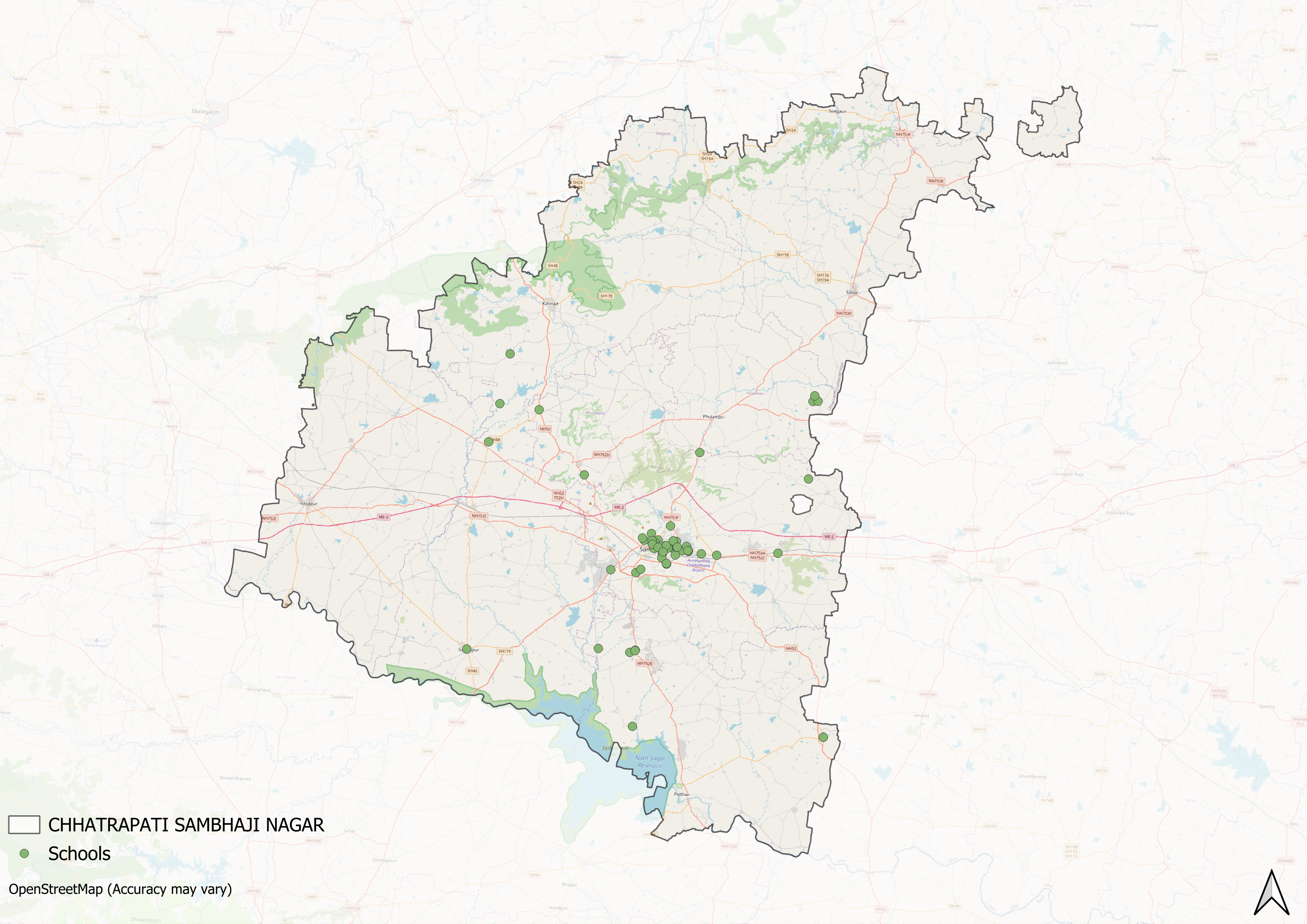
Today, this expansion is evident in the widespread presence of schools across various wards of the district, with available data reflecting the steady growth of educational institutions in both urban and rural parts of the district.
Multiple educational boards and mediums of instruction also emerged over the years. In Chhatrapati Sambhaji Nagar, the educational landscape is shaped by several boards and institutions that govern and facilitate education at various levels. The primary board is the Maharashtra State Board of Secondary and Higher Secondary Education, which oversees the Secondary School Certificate and Higher Secondary Certificate examinations in the region.
This board operates through its divisional office in Chhatrapati Sambhaji Nagar, managing numerous schools across the state. Additionally, there are private institutions affiliated with national boards such as the Central Board of Secondary Education (CBSE) and the International General Certificate of Secondary Education (IGCSE), which offer alternative curricula to students. Notable schools like Stepping Stones High School provide both CBSE and IGCSE programs, catering to diverse educational needs.
Institutions of Higher Learning
Perhaps one of the most notable changes in Sambhaji Nagar’s educational landscape is tied to the establishment of higher education institutions. While primary and secondary schooling expanded steadily, opportunities for advanced education remained limited for much of the district’s history. Over time, local leaders and organizations played a crucial role in addressing this gap, leading to the creation of several colleges. As a result, many institutions in the district today are privately managed, semi-private, or autonomous.
Milind College
In the post-independence era, many educators and social reformers in Chhatrapati Sambhaji Nagar sought to improve access to education in the Marathwada region. Dr. B. R. Ambedkar was a key figure in this movement, advocating for education as a means of social change. Recognizing Ambedkar's efforts to promote education and social reform, the 7th Nizam of Hyderabad, Mir Osman Ali Khan, allocated 54 acres of land for the establishment of Milind Mahavidyalaya, which was named in honor of the Indo-Greek king Milind.
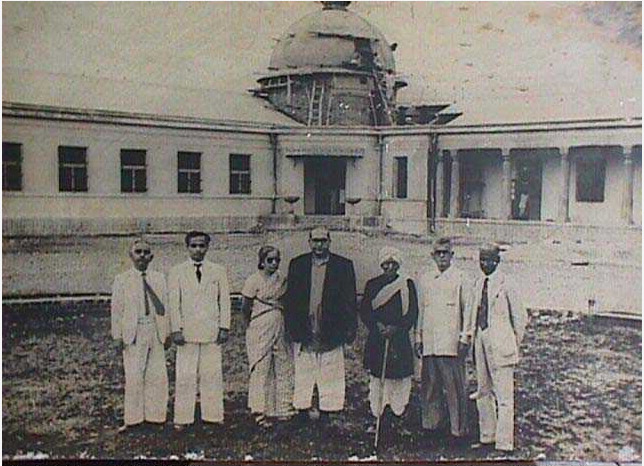
Initially founded as a single college, Milind Mahavidyalaya has since expanded to include Milind College of Science, Milind College of Arts, and Dr. Babasaheb Ambedkar College of Commerce, collectively offering a wide range of undergraduate programs that cater to diverse fields of study.
Government College of Education
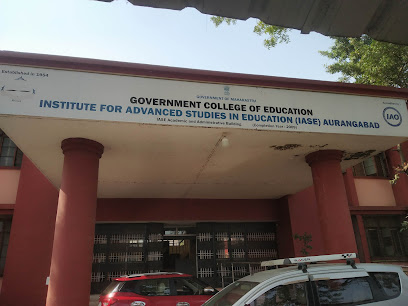
Established in 1954, the Government College of Education in Chhatrapati Sambhaji Nagar has played a crucial role in enhancing teacher training and improving educational standards in the region. The college offers programs such as the Bachelor of Education (B.Ed.) and Master of Education (M.Ed.), focusing on both theoretical knowledge and practical training to prepare students for effective teaching careers.
Dr. Babasaheb Ambedkar Marathwada University
Dr. Babasaheb Ambedkar Marathwada University, established in 1958, was created to meet the pressing educational needs of the Marathwada region. Before its establishment, students often had to seek opportunities outside the region due to limited local provision.

The university was named in honor of Dr. B. R. Ambedkar, who for much of his life advocated for social reform and education. This renaming symbolizes a commitment to Ambedkar's vision of equitable education, aimed at breaking down barriers that distinguish various social groups within educational settings. Today, the university stands as a major institution in Marathwada, with many affiliated colleges spread throughout the region.

In addition to these institutions, a number of centers for higher education operate throughout the district, which offer programmes across various disciplines. While the landscape of higher education has broadened significantly since independence, disparities in access, particularly along geographic lines, remain evident.
Graphs
Enrollment and Dropout Rate
Schools
Teachers
Sources
Ajanta Education Society. “About Ajanta Education Society.” https://www.bkcollegeajanta.org/about-ajanta…
Baburaoji Kale. “About Baburaoji Kale.” https://www.sdcollege.org/about-baburaoji-ka…
Dilasa Janvikas Pratishthan. “About Us.” http://www.dilasango.org/about-Dilasa-Janvik…
Dr. Babasaheb Ambedkar Marathwada University. “History of the University.” http://www.bamu.ac.in/AboutUniversity/Histor…
Gopalrao Patil Arts, Commerce & Science College. “About Us.” https://gasca.ac.in/aboutus.html
Government College of Education, IASE, Chhatrapati Sambhaji Nagar. “Admission Notice for B.Ed. 2024-25.”https://iasechhatrapatisambhajinagar.org/
Rani, L., & Kumari, P. 2019. Role of Buddhist religion in development of Indian education system. International Journal for Research in Education (IJRE), vol 8 no 5.http://raijmr.com/ijre/wp-content/uploads/20…
Sugunam Das. 1962. The status of education in Hyderabad, India in historical perspective. Boston University Thesis & Dissertations.https://open.bu.edu/bitstream/handle/2144/17…
Tathagat. 2023. “Milind College: A Dr. Ambedkar’s Legacy.” Tathagat Live. https://tathagat.live/blogs/news/milind-coll…
Viraj Shah. 2014. “The Power of Faith: Nemgiri.” Maharashtra Unlimited. vol 3, no. 4.https://www.academia.edu/41439425/The_Power_…
Last updated on 28 July 2025. Help us improve the information on this page by clicking on suggest edits or writing to us.